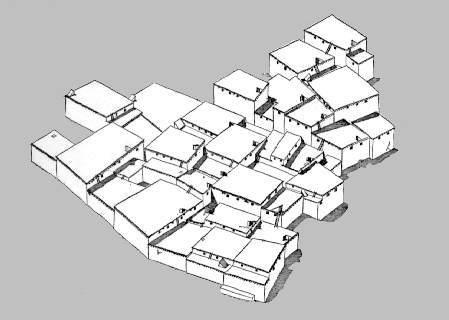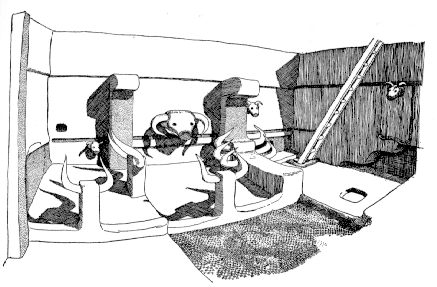Mission Statement
Çatalhöyük is an example of the important Anatolian contribution to the development of Mediterranean societies. A site of this importance for the Mediterranean heritage needs careful conservation and presentation to the public. It poses problems of conservation of mud brick and wall plaster, and problems of site management which have a wider applicability to many sites in the Eastern Mediterranean.
| Excavated by James Mellaart in the early 1960s, the site has been widely recognised as of unique international significance. The popular Collins guide to Turkey is one of many that describes Çatalhöyük as 'probably the most important archaeological site in Turkey'. It is the first urban centre in the world (at 7000BC) and it has the first wall paintings and sculptures. The spectacular art provides a direct window into life 9000 years ago, and the site is an internationally important key for our understanding of the origins of agriculture and civilisation. |  |
Given its international importance and its attractive and evocative art, Çatalhöyük should be an exciting and popular place to visit. Between Cappadocia and the resorts of the south coast the site could attract a large number of visitors. The museums in the nearby town of Konya receive 1.3 million visitors a year. And yet at present few make the trip to Çatalhöyük. Most guide books warn that there is little to see. The trenches of the excavations are worn away, there are no paintings to see, there is no museum and few visitor facilities. Apart from a very helpful pair of guards, there is little more than an eroded mound.
The solution at Çatalhöyük is full-scale modern archaeological excavation and conservation, and promotion of the site for visitor access. Archaeological excavation and conservation by an international team started in 1993 under the direction of Dr Ian Hodder of the Çatalhöyük Research Trust, Cambridge University, under the auspices of the British Institute of Archaeology at Ankara, with a permit from the Turkish Ministry of Culture, and in close collaboration with the Middle Eastern Technical University and Ankara University. The work aims at extensive uncovering of new areas of the site and the recovery, conservation and presentation of paintings and sculpture. The work is planned to continue over 25 years.
The ultimate aim is to provide the Turkish Ministry of Culture with a well planned heritage site. Visitors will be able to experience the site in a number of ways. A conservation laboratory will be built and the latest techniques applied. Visitors will be able to see this conservation at work. The conserved wall paintings, sculptures, textiles, wooden and ceramic artifacts will then be placed on display in an on-site museum, enhanced by virtual reality techniques and interactive video. Some of the paintings will also be placed back in conserved houses on the site. Part of the site will be covered so that the ancient houses are protected and so that visitors can walk around a Neolithic village. By providing a range of visitor experiences the full heritage potential of the site can begin to be exploited.
|
|
The main research direction is to place the paintings and symbolism within a full environmental, economic and social context. Central questions concern the origins of the site and its early development, social and economic organisation and variation within the community, the reasons for the adoption and intensification of agriculture, the social context for the early use of pottery, temporal trends in the life of the community, trade and relations with other sites in the region. |
